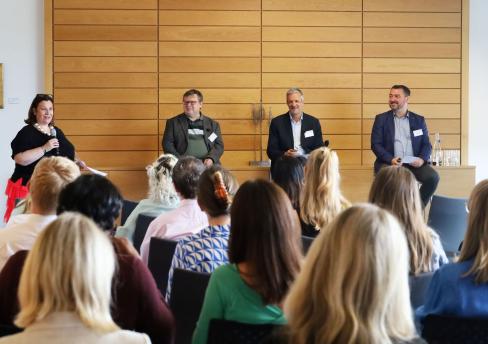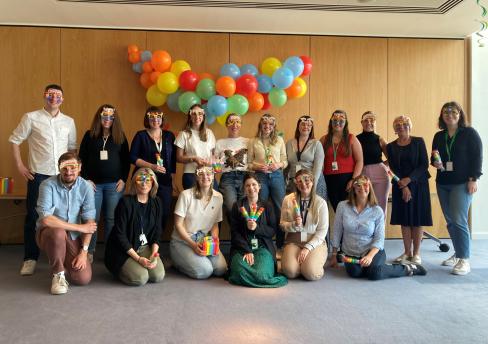Diversity and Inclusion approaches in organisations all around the UK are coming under closer scrutiny following wider events in society such as the Black Lives Matter Movement and the COVID-19 pandemic.
Many organisations have appointed specialist diversity advisors and have developed targets to ensure their business makes suitable progress. But are targets really the way to create more diversity and inclusion in your business?
What is the 'business case for diversity and inclusion?
The business case for inclusive and diverse businesses is clear: companies with greater diversity are 70% more likely to capture a new market[1] , have 19% higher innovation revenues[2] , enjoy greater customer satisfaction and better market position,[3] and outperform non diverse teams by 35%.[4]
For leadership teams to take D&I seriously, imposing targets to be achieved on characteristics of diversity does not make sense. It does not help leaders achieve business goals. Instead the discourse should be about the business issues that need to be resolved and how an approach to D&I might help with that.
What about the terms diversity and inclusion?
For me 'Diversity' is being invited to the party and 'Inclusion' is actually being asked to dance. Inclusion means ensuring workers can fulfil their potential, regardless of their background, identity or circumstance.
That is why hiring diverse talent isn’t enough; it’s the experience at work that shapes whether people stay and go on to bigger and better things and deliver more for the business.
An inclusive workforce will include diversity of thought and lived experience. How do we share information in our firms and is it digestible to everyone? Do you actively engage all of your people in conversations around organisational improvement or are people in fear of speaking up? Do you even seek the views of your staff? These are the activities that are a barometer of success for inclusive environments.
The law and D&I
Acts of Parliament protect workers’ rights and the 2010 Equality Act prohibits discrimination on the basis of 9 protected characteristics. While these characteristics are important, merely setting targets to observe them does not guarantee that an organisation is open and fair. For some organisations that process may have helped improve matters, but it ignores the complexity of D&I and potentially reduces it to a box ticking exercise.
Why target setting does not work
Measuring the impact of your D&I strategy depends on what your strategy is in the first place – is it just about hitting a target or is it about delivering a fundamental change in organisational culture? Merely setting targets won't drive the right behaviours without any further intervention. You will have different folks at the party, but very few of them will be dancing, to continue the analogy. What this means in practical terms is that you fail to create a sense of belonging among the diverse people you have successfully recruited. They will find it difficult to do their jobs if colleagues and leaders don't consciously support their endeavours, eventually lacking engagement and leaving. So the cycle begins again.
Diversity is not a numbers game. It is fundamental to the way our people feel about their place of work and the culture that exists. All of this is going to become more acutely visible to Boards as 'Gen Z' becomes a significant part of the global workforce. People born after 1996 have more of an interest in organisational values than any other workforce in history. The digital transformation and increase in connectivity which is part of their upbringing makes 'Gen Z-ers' much more sensitive to social issues, from the disposable clothing phenomenon to diversity in the workplace.
To attract the best talent from a very enlightened talent pool, we will have to be more vocal about our values and show why we are a great place to work for great people. Our focus should be on making the process more meritocratic and fairer for candidates, rather than actively imposing bias to ensure diversity targets are met.
One of the practical ways we have tried to attract socially diverse candidates is by using a contextualised recruitment system that identifies candidates for legal traineeships who come from a socially disadvantaged background. Quite simply it levels the playing field for entry into the profession. In our 2020 intake, 25% of the people shortlisted came from socially disadvantaged backgrounds. This approach allows us to talk openly about diversity and our inclusive culture, without resorting to simply saying we have this many people from this place or that demographic. Although more needs to be done, this is a tangible way of showing how applying a D&I lens to an organisational problem can work.
The Parker Review issued by the UK government sets targets for diversity that does not address the complex and underlying issues around diversity. The criteria to be achieved states that a company needs to appoint “at least one” of the following to the board: a woman, a person of racial minority ethnicity, or a member of the LGBTQ+ community. What if someone ticks all of these boxes? Is the Board considered somehow more diverse? This does not address what diversity is about and has the potential to feel like tokenism as a result. If a company has a strong record of promoting diversity throughout its business but does not meet the board-level criteria, is it considered somehow less worthy than those who have made a token appointment?
Diversity should be an unassailable priority for all organisations. However this needs to be as a matter of substance, not symbolism. Our culture, actions and behaviour at Morton Fraser are targeted towards promoting and developing diversity in the interests of everyone. It does not just tick the boxes without driving real and lasting change at all levels inside and outside the Firm. Have we got there yet? No, but we are well on our way.
The content of this webpage is for information only and is not intended to be construed as legal advice and should not be treated as a substitute for specific advice. Morton Fraser LLP accepts no responsibility for the content of any third party website to which this webpage refers. Morton Fraser LLP is authorised and regulated by the Financial Conduct Authority.










